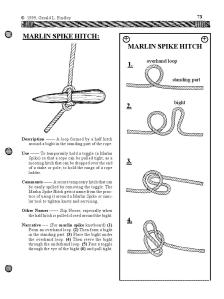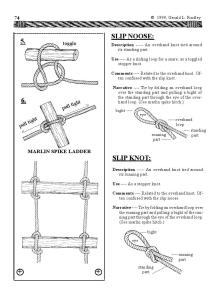MARLINE SPIKE HITCH
Archive for the ‘HITCHES’ Category
MARLINE SPIKE HITCH
Posted in HITCHES, tagged HITCHES, MARLINE SPIKE HITCHES on January 31, 2011| Leave a Comment »
figure of eight knot
Posted in 3. DWITIYA SOPAN, HITCHES, tagged dwitiya sopan, figure of eight know, knot, pioneering on April 20, 2010| Leave a Comment »
| Figure of Eight knot, Flemish knot, Savoy knot |
|
||||
rolling hitch
Posted in 3. DWITIYA SOPAN, HITCHES, tagged dwitiya sopan, hitch, pioneering, rolling hitch on April 20, 2010| Leave a Comment »
 |
|
|
|
timer hitch
Posted in 3. DWITIYA SOPAN, HITCHES, tagged dwitiya sopan, hitch, pioneering, timber hitch on April 20, 2010| Leave a Comment »
As well as being used to start a diagonal lashing, a timber hitch can be used as a temporary knot when you need to drag, tow or lift a log or pole. (see second diagram)





